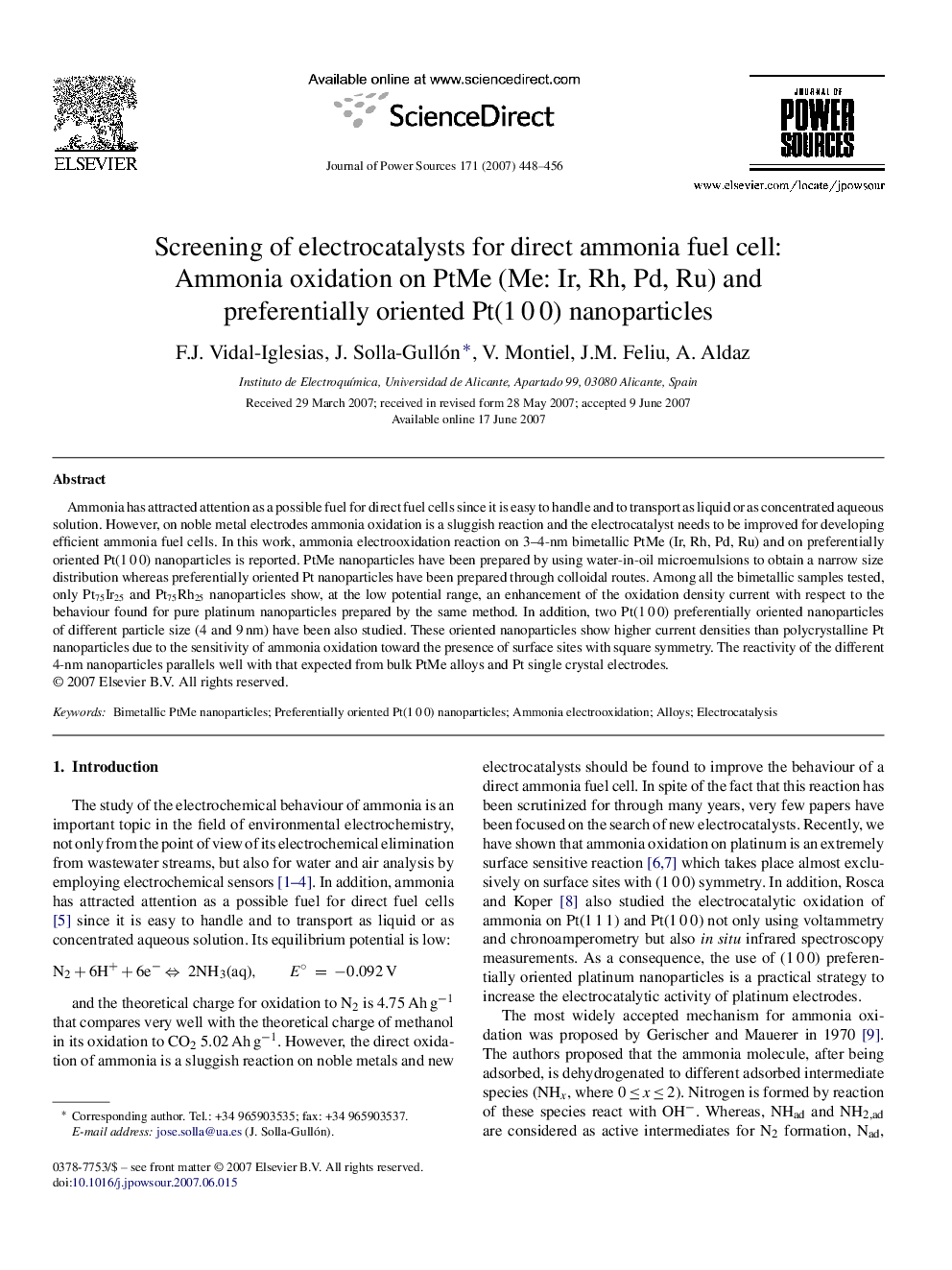| Article ID | Journal | Published Year | Pages | File Type |
|---|---|---|---|---|
| 1286351 | Journal of Power Sources | 2007 | 9 Pages |
Ammonia has attracted attention as a possible fuel for direct fuel cells since it is easy to handle and to transport as liquid or as concentrated aqueous solution. However, on noble metal electrodes ammonia oxidation is a sluggish reaction and the electrocatalyst needs to be improved for developing efficient ammonia fuel cells. In this work, ammonia electrooxidation reaction on 3–4-nm bimetallic PtMe (Ir, Rh, Pd, Ru) and on preferentially oriented Pt(1 0 0) nanoparticles is reported. PtMe nanoparticles have been prepared by using water-in-oil microemulsions to obtain a narrow size distribution whereas preferentially oriented Pt nanoparticles have been prepared through colloidal routes. Among all the bimetallic samples tested, only Pt75Ir25 and Pt75Rh25 nanoparticles show, at the low potential range, an enhancement of the oxidation density current with respect to the behaviour found for pure platinum nanoparticles prepared by the same method. In addition, two Pt(1 0 0) preferentially oriented nanoparticles of different particle size (4 and 9 nm) have been also studied. These oriented nanoparticles show higher current densities than polycrystalline Pt nanoparticles due to the sensitivity of ammonia oxidation toward the presence of surface sites with square symmetry. The reactivity of the different 4-nm nanoparticles parallels well with that expected from bulk PtMe alloys and Pt single crystal electrodes.
